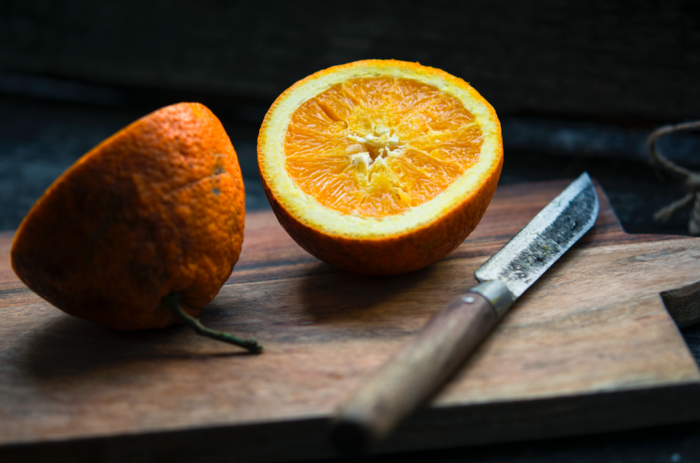Cellulite is a concern that affects some 80 percent of all females.
Research suggests cellulite is a consequence of alterations that develop in the lymphatic system that lead to an accumulation of substances in subcutaneous tissue. This can cause the accumulation of fluids and other substances in the cellular tissue, creating the appearance of cellulite.
I am often fascinated by the origins of certain Ayurvedic medicines. One that always intrigued me was the notion that the white part, or the pith, of the orange or pomegranate was a powerful medicine for the heart, lymph, and circulation.
During my training in India, I remember drying the peels of oranges and pomegranates and then scraping off the pith to make a medicinal white powder.
The pith of citrus fruits is indeed loaded with health-promoting nutrients. So, next time you peel an orange, grapefruit, or pomegranate, make sure you get your fair share of the pith as well.
One of the active constituents of citrus pith is called modified citrus pectin (MCP). MCP is rich in certain sugar molecules called galactosides. These galactosides bind to and inactivate a group of damaging molecules called galectin-3.
Galectin-3 molecules are actually helpful to the body, but can causes problems in excess. Under certain conditions, the galectin-3 molecules race to the sites of tissue damage, and one of its repair mechanisms is to produce scar tissue. However, too much scar tissue can lead to a host of cardiovascular health risks, lymph congestion (cellulite), kidney problems, and unhealthy cell division.
Modified citrus pectin binds to the galectin-3 and deactivates it. Imagine the body laying down excess scar tissue in the arteries in an attempt to heal—scary thought, right?
MCP stops the galectin-3 from laying down unwanted and potentially harmful scar tissue. So, eat the white pith.
The pith of most citrus fruits is also loaded with a well-researched citrus flavonoid called diosmin.
Diosmin has been utilized for decades to support healthy capillary and vein function, as well as healthy microcirculation throughout the body.
Diosmin fundamentally helps maintain the structure and function of the lymphatic and circulatory system, especially vein strength and competence.
In pharmacological and clinical studies, diosmin from the citrus pith promoted normal lymph drainage, healthy capillary permeability, and favorable microcirculation.
Microcirculation and lymph congestion can compromise healthy venous drainage in the legs as well as cause a buildup of poorly circulated fat in the form of cellulite.
In one study, lymphatic massage was given 10 times over a two-week period to 14 patients. The results showed cellulite reductions at both points below the navel, the points on the thighs, and at the gluteal fold, suggesting that lymphatic system stimulation is efficacious in the treatment of cellulite.
Stimulating the lymphatic system is the very first therapy considered in any Ayurvedic evaluation. The lymphs are the drains of the body and are commonly a source of imbalance.
Ayurveda employs numerous daily therapies for the lymph, including two types of daily massage:
- Abhyanga: daily self-massage in the shower with warm herbalized oils.
- Garshana: stimulating the lymph with vigorous dry brushing using raw silk gloves, called garshana gloves.
Here are a few of my favorite herbal formulas to stimulate the lymphatic system:
- Lymph-Vein HP with diosmin as described above.
- Manjistha to support healthy flow in the lymphatic vessels.
- Lymph Cleanse tincture to support the healthy flow of lymph fluid through the lymph nodes.
- Brahmi Brain to support the healthy flow of the brain and lymphs in the central nervous system.
By understanding the dynamics of the lymph system and its relation to stress, microbes, and digestion, we can help boost the function of the drains of the body and ward off lymph congestion and cellulite.
~











Read 1 comment and reply